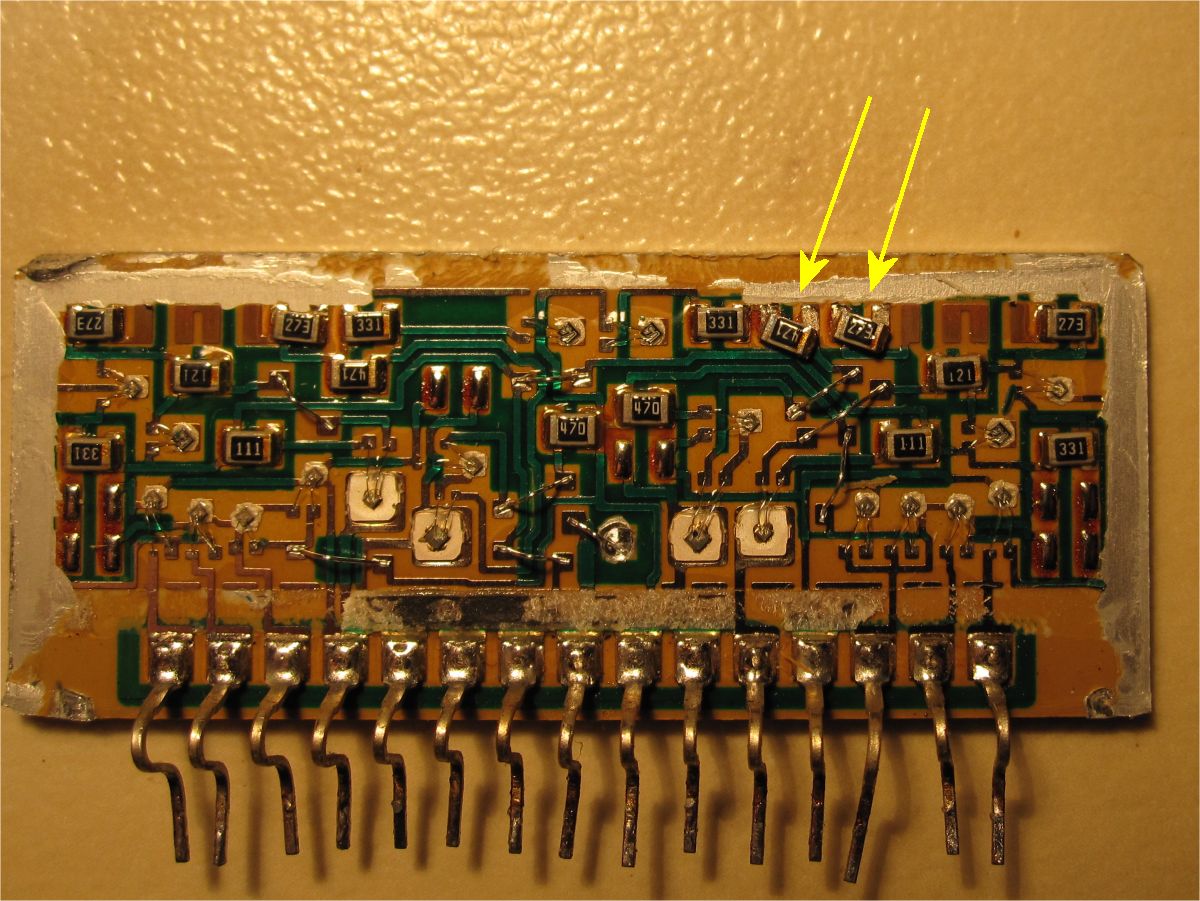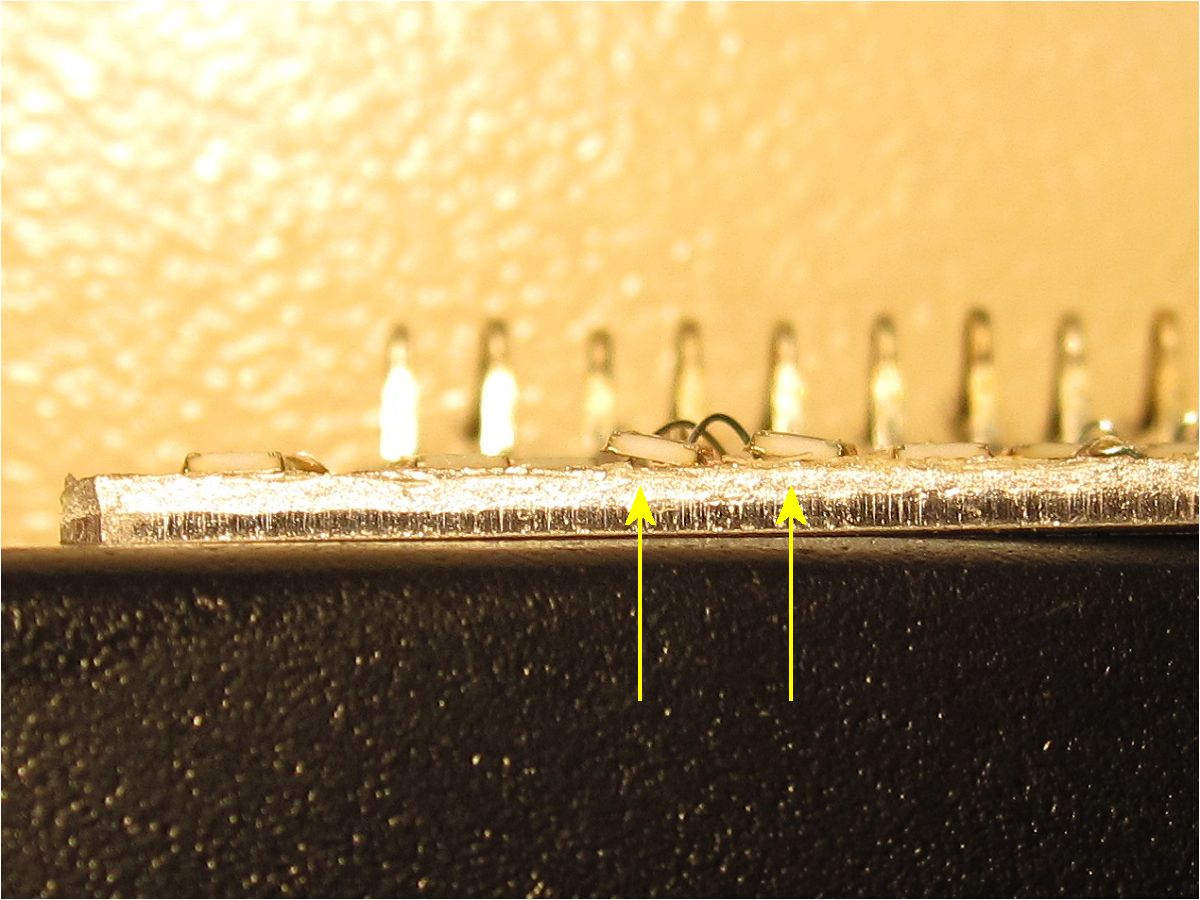Kenwood A97 Amplifier in "Protect" Repair

If you landed here on this orphan page from a search engine result then I hope this page helps you resolve what appears to be a common problem with the Kenwood A97 amplifier.
My Kenwood A97 came up with PROTECT on the display again last week, it has happened a few times before (3-4 years apart) and each time changing IC1, a STK350-030 audio ampilier chip, resolved the issue. On checking the loudspeakers and other potential culprits I could never find a firm reason for this happening.
This time when I removed the old chip I noticed the paper printed circuit board under the chip was a bit discoloured
indicating a fair bit of heating going on in the device, so I decided to make a small modification when fitting the
replacement STK350-030. Hopefully this will avoid premature failure of the new chip.
First I turned the unit over and removed the three screws holding on the access panel.

Then I had access to desolder and remove IC1 the single in line Audio Amplifier chip.

I made up a heatsink from some 3mm thick aluminium (painted satin black to help with heat dispersal), an old trim clip
from a car and some M3 fixings.

This is what it will look like after assembly, note that the plate is fitted approx. 2mm from the bottom edge of the chip.

After ensuring the nearby electrolytic capacitors were fully discharged and taking some anti-static precautions,
I soldered in the new chip, then after spreading a thin layer of heatsink compound on the back of it, clipped the new
heatsink into place. Worth checking that it does not foul any of the other components, particularly the capacitors
sited just behind the chip.
 I tested the unit as soon as this was done and it's working again, time will tell if this modification will make a permanent
'fix' for this issue.
I tested the unit as soon as this was done and it's working again, time will tell if this modification will make a permanent
'fix' for this issue.
A few days after the repair I was still curious about the failure mode so I cracked open the case of the failed
STK350-030. What I could see immediately from a quick inspection was that two of the surface mounted resistors
were dislodged fron their solder pads. Looks like it got so hot here the solder melted and gravity did the rest,
either the calculations for the resistors were slightly out, or the device just can't quite cope with
the power on such a small piece of metal as used for the substrate/heatsink.

Here's a close up from the top edge showing how two of the resistors have actually lifted clear of the solder pads.
I was tempted to resolder the resistors back into position and try the chip in an amplifier again, but decided
not to as cracking the case off may have caused other issues on the hybrid chip!


|
Copyright © 2016: glowwormbooks.co.uk ---- last updated 27 November 2016.
Site Terms & Conditions |